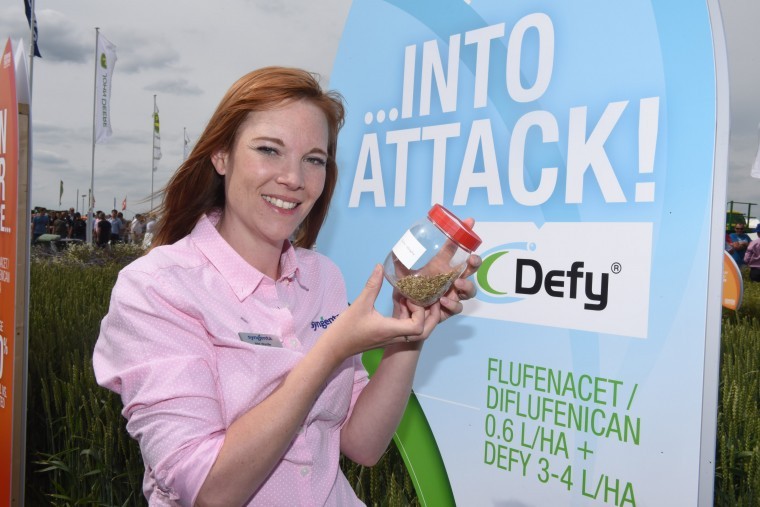Increasing pre-emergence Defy application rate to 4.0 l/ha could reduce Black-grass seed returns by the same weight of grass seed per m2 as used to sow Wimbledon Centre Court.
Results of trials at Syngenta Black-grass Innovation Centres have consistently shown the increased control from a higher rate of Defy in the autumn pre-emergence herbicide stack, reported the company’s Cereal Herbicide Campaign Manager, Melanie Wardle.
“Increasing Defy rates from 2.0 l/ha to 3.0 l/ha reduced Black-grass seed return by an average 3200 seeds per m2 – an equivalent to 160 kg/ha,” she highlighted. Further increasing the rate, to 4.0 l/ha, gave another step change in improved control – reducing seed returns by more than 5800 Black-grass seeds per m2, or 290 kg/ha, compared to the 2.0 l/ha rate.
“Reduced rates of control not only hits yields of the growing crop, but the enormous seed return has long-term implications right through the rotation and the potential success of any future control strategies,” warned Mel.
She pointed out that adding Defy into the pre-emergence stack had always improved overall efficacy and Black-grass control. “With the aim to achieve 97% Black-grass control just to hold populations in check, growers and agronomists need to maximise performance at every point in an integrated approach,” she added.
Additional products and higher rates will increase growers’ costs, she acknowledged. However, this season’s trials at the Syngenta Black-grass Innovation Centre in Cambridgeshire, for example, have demonstrated the damaging yield effects of Black-grass populations mean growers can see a positive financial return on Defy pre-em herbicide investment in the first year alone – along with the longer term implications of managing weed numbers more effectively as part of a long-term integrated control strategy.
Caption: Increasing the rate of Defy in a pre-emergence stack from 2.0 l/ha to 3.0 l/ha, reduced Black-grass seed return by an average 160 kg/ha – equivalent to the seed rate typically used to sow a lawn, and all the crop competition that density of cover would entail, according to Mel Wardle of Syngenta.




